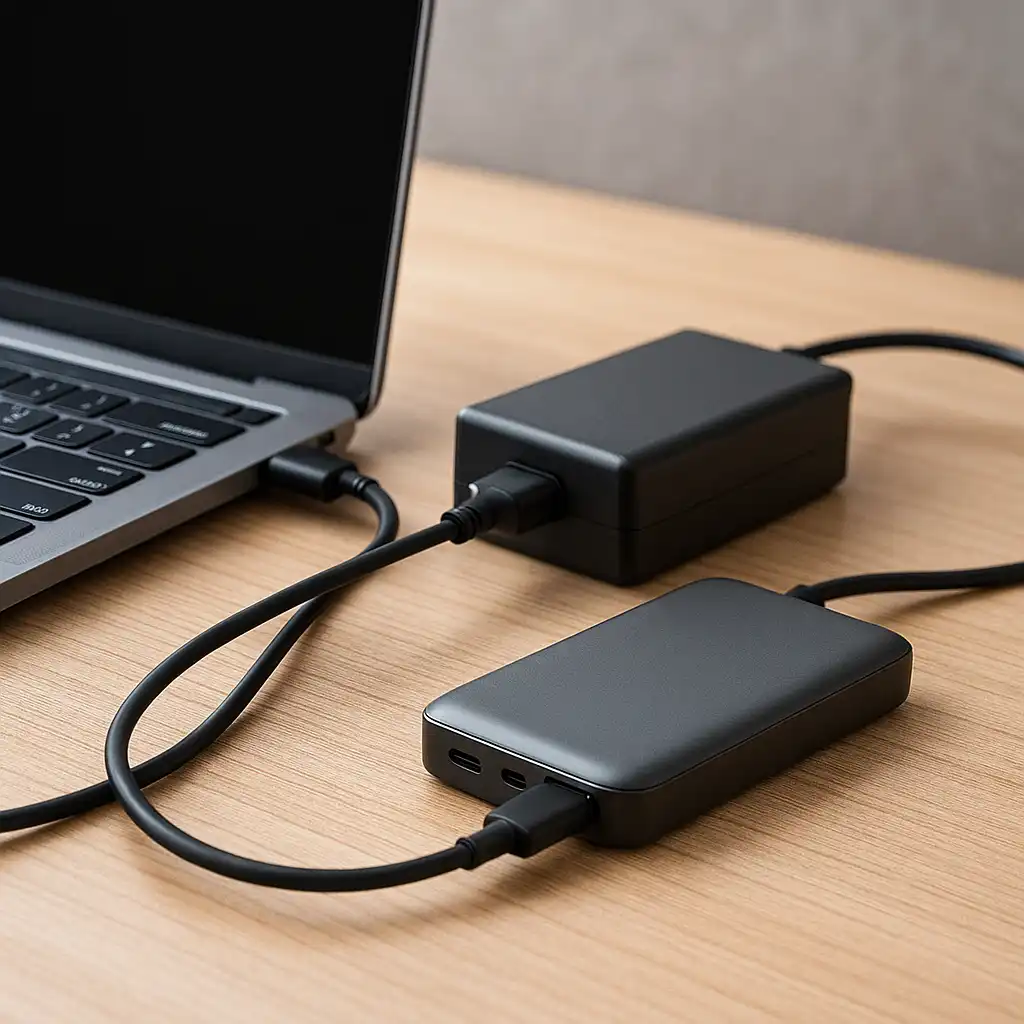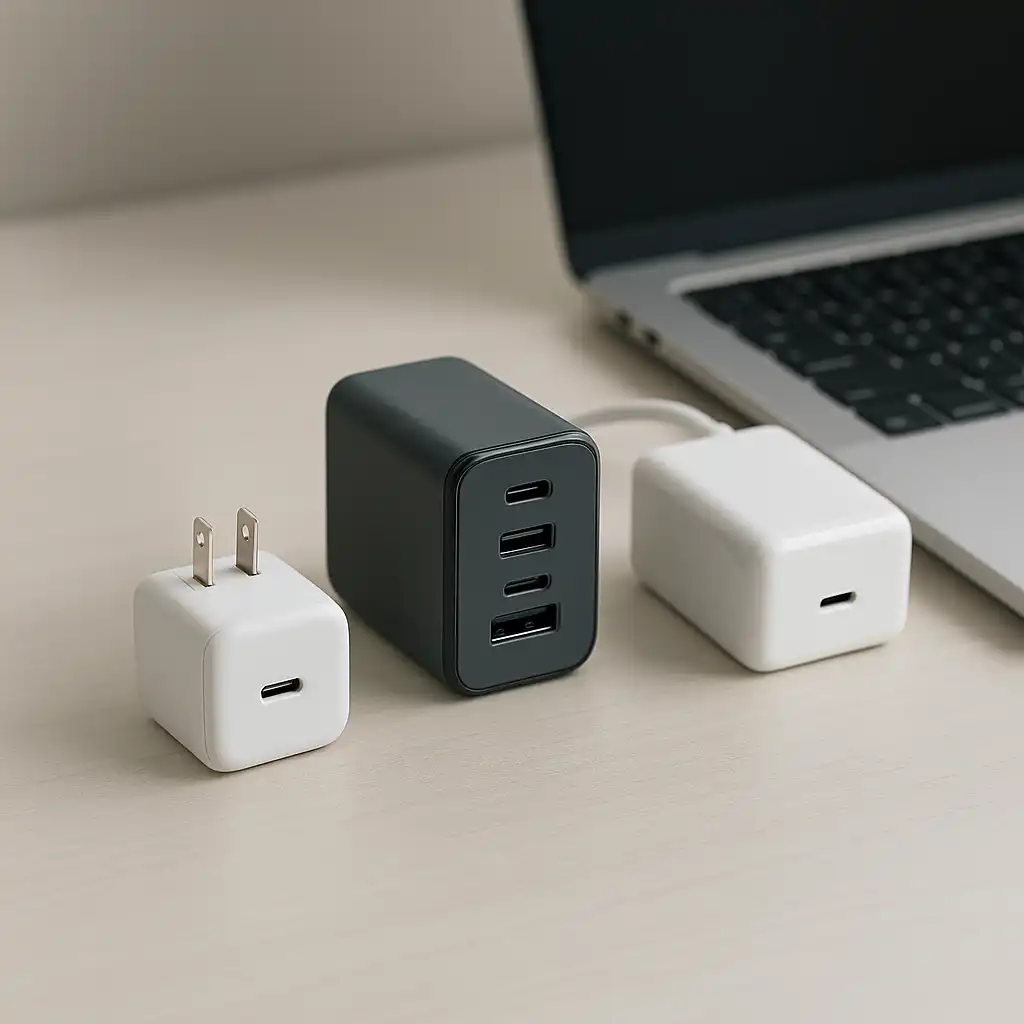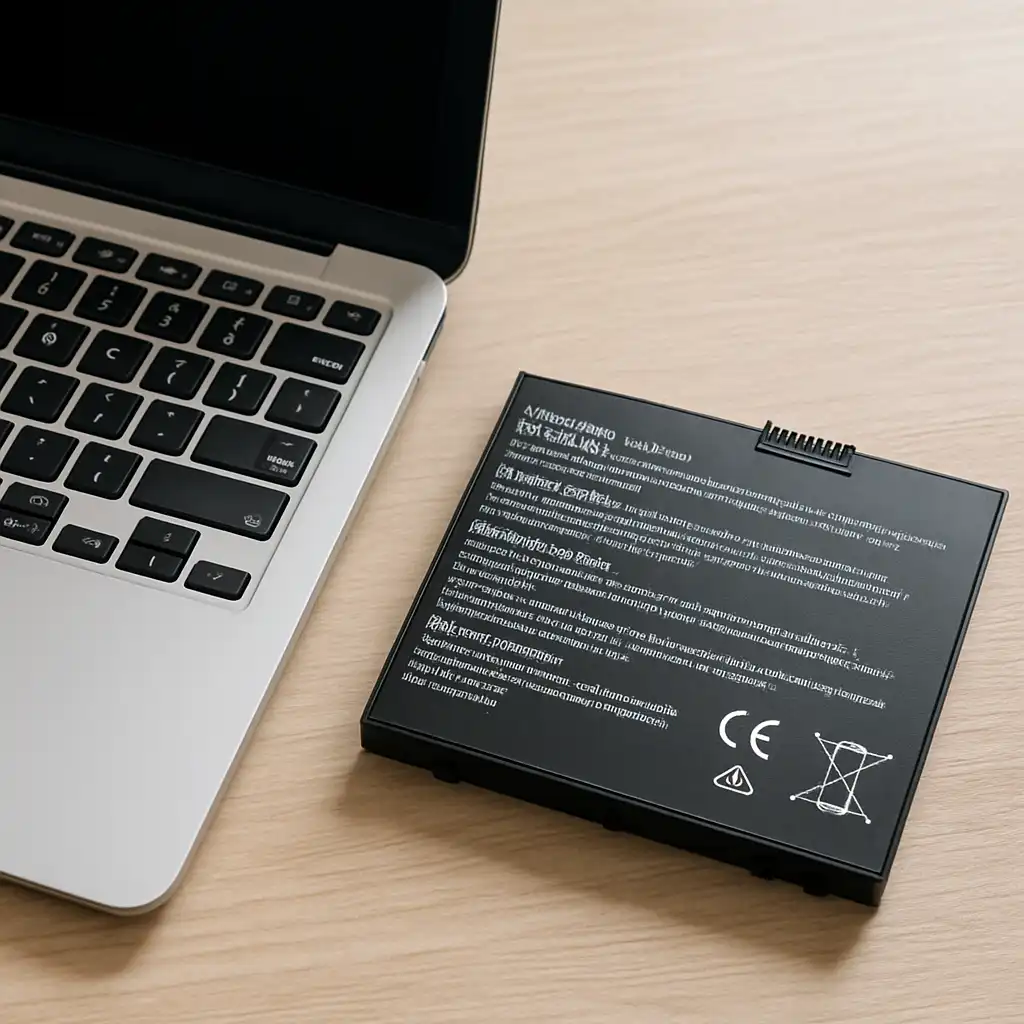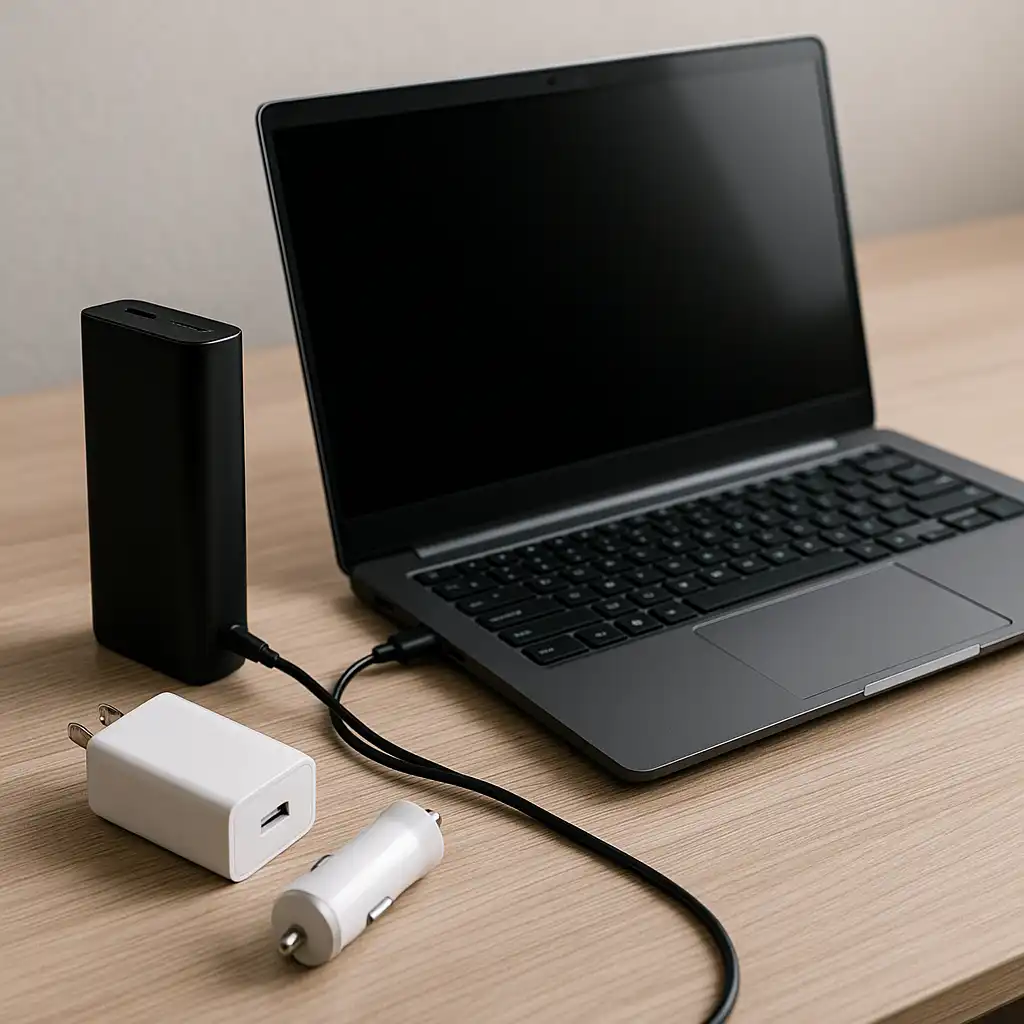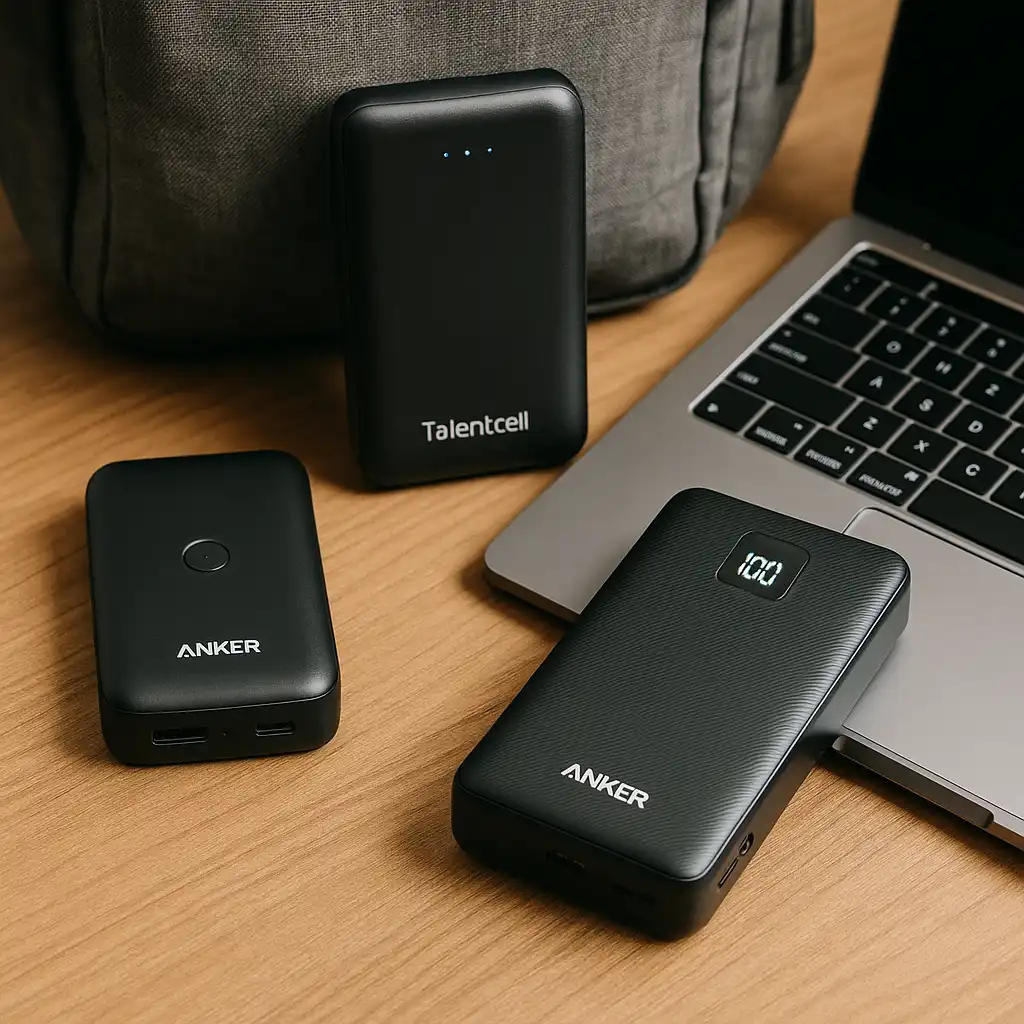How to Charge a Laptop the Right Way — Tips for Safe and Efficient Charging
Disclosure: This post contains affiliate links. LaptopVoyager.com participates in the Amazon Associates Program and may earn commissions on qualifying purchases, at no extra cost to you.
Last Updated: December 2025
Charging your laptop correctly helps your battery last longer, keeps temperatures manageable, and ensures you get the fastest possible charging speeds. A few simple habits—like using the right charger, keeping your ports clean, and avoiding unnecessary heat—go a long way toward keeping your device reliable.
👉 If you’d like a quick overview of wattage, compatibility, and how USB-C behaves across laptops, check out our full breakdown of laptop charging basics before you get started.
🔍 Use the Correct Charger for Your Laptop
Your laptop’s original charger is always the safest match. Using weaker or unregulated chargers often results in slow charging or random disconnects. Match the wattage listed on your original adapter, and use the manufacturer cable whenever possible. Higher-watt USB-C chargers are generally safe, but underpowered ones cause the most issues.
🔍 Plug Into a Reliable Power Source
A stable outlet makes a noticeable difference in charging speed. Wall outlets offer the best consistency, followed by surge-protected power strips. Public ports in cafés, buses, or airports rarely deliver enough wattage for laptops. Whenever possible, plug directly into a wall outlet for the most reliable power delivery.
🔍 Keep the Charging Port and Cable Clean
Dust or lint inside your laptop’s charging port can interfere with charging. A quick inspection every now and then helps prevent slow speeds or charging interruptions. Use a soft brush or air duster—never metal tools—to clean the area gently.
🔍 Charge in a Cool Environment
Heat slows charging and puts extra stress on the battery. Avoid charging on soft surfaces that trap heat. Keep the device well-ventilated, and let it cool down if it already feels warm. Your laptop will charge more efficiently when temperatures stay comfortable.
🔍 Don’t Let the Battery Drain to 0% Frequently
Lithium batteries last longer when you avoid deep discharges. Keeping your charge between 20% and 80% helps maintain long-term health. Topping up throughout the day or turning on battery saver modes during travel keeps your laptop running longer between charges.
🔍 Use the Right USB-C Port for Charging
Not every USB-C port supports power input. Look for a small charging icon next to the port, or check your system manual for confirmation. Using the wrong port may result in slow charging—or no charging at all.
🔍 Close Power-Hungry Apps While Charging
Heavy apps can compete with the charger and slow charging speeds significantly. Browsers with dozens of tabs, games, and video editing tools use a lot of power. Closing these apps helps the battery charge faster and keeps temperatures down.
🔍 Avoid Keeping the Laptop at 100% Constantly
It’s okay to charge to 100%, but staying at full charge for long periods accelerates battery wear. Unplug around 80–90% when convenient, and enable battery health modes if your laptop offers them. Small adjustments like these improve long-term battery performance.
📌 Key Takeaways
- Use the correct charger and cable for the best results
- Charge in a cool, well-ventilated place
- Avoid frequent 0% battery drains
- Make sure you’re using the correct USB-C charging port
- Close heavy apps to help the battery charge faster
- Avoid leaving the laptop at 100% for long stretches
🟢 FAQs
Q: Can I use a higher-watt charger than the one included?
Yes. Most USB-C laptops regulate incoming power safely, so higher-watt chargers are generally fine.
Q: Why is my laptop charging slowly?
It could be the wrong charger, a low-power USB port, high temperatures, or resource-heavy apps running in the background.
Q: Is it okay to use a laptop while charging?
Yes. Just avoid demanding workloads if you want the fastest charging speed.
Q: Does overnight charging damage the battery?
Your laptop stops charging once full, but staying at 100% every night can speed up long-term battery wear.
✅ Conclusion
Charging your laptop properly is straightforward, and a few small habits can make a big difference. Using the right charger, keeping temperatures cool, and avoiding unnecessary battery stress help your device stay healthy and charge efficiently. With consistent care, your laptop will deliver better performance and longer battery life over time.

